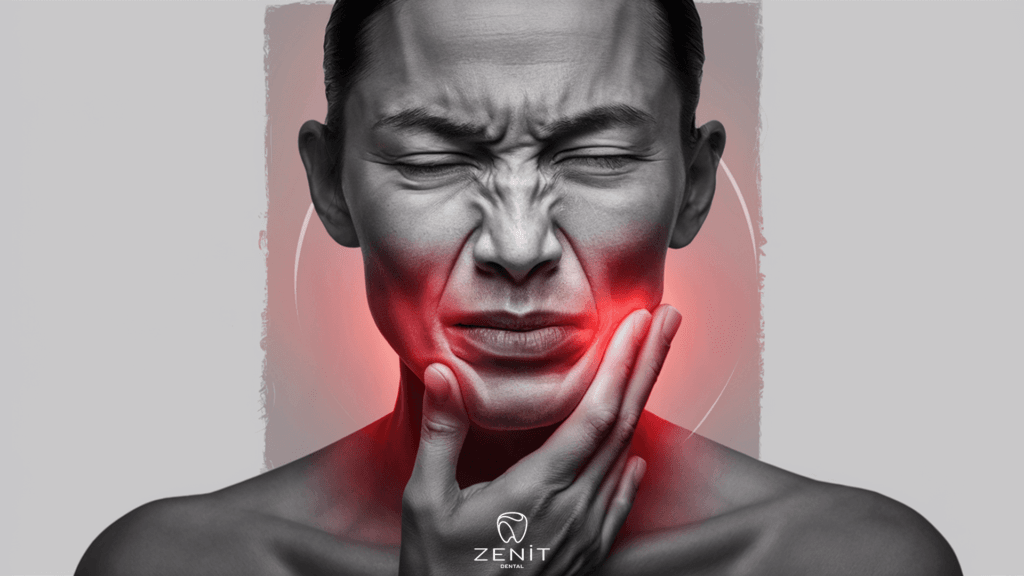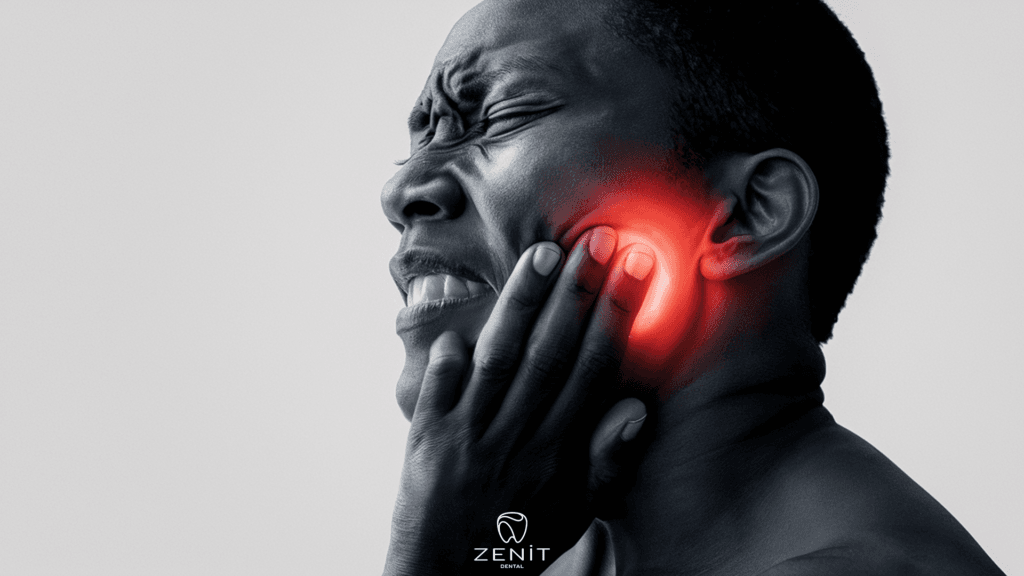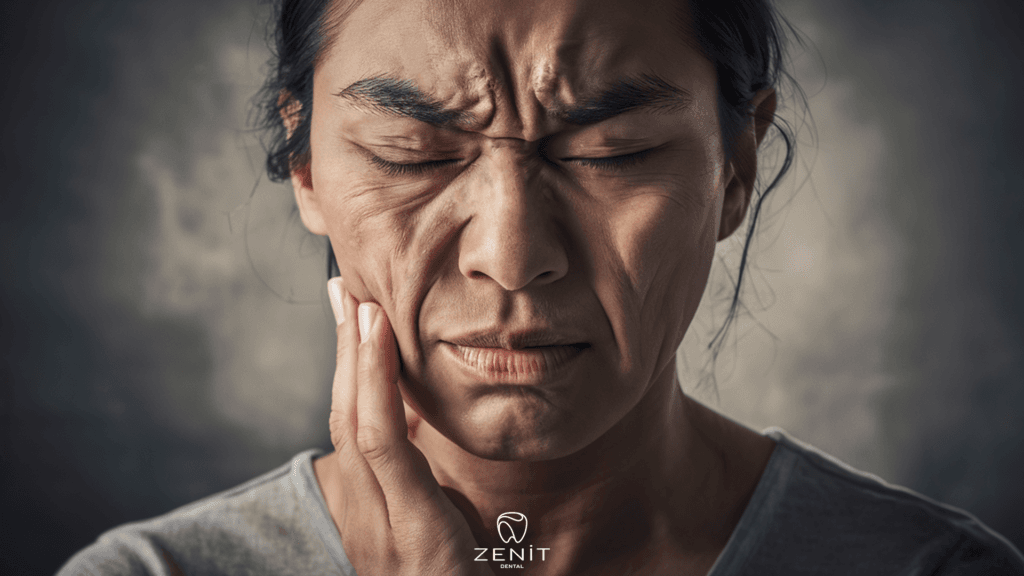Jaw Joint Pain
Temporomandibular joint pain is one of today’s most common health problems and is often associated with temporomandibular joint (TMJ) disorders. The temporomandibular joint is the joint where the jaw is connected to the skull and allows the mouth to open and close. Pain and discomfort in this joint can significantly affect a person’s quality of daily life.
Causes of Jaw Joint Pain
There are many possible causes of jaw joint pain and it is often caused by a combination of factors. Among the most common causes:
- Temporomandibular Joint Disorders (TMJ Disorders): TMJ disorders include conditions such as dislocation of discs in the jaw joint, inflammation of the joint capsule, or tightness of the muscles around the joint. These disorders can lead to pain, stiffness and limitation of movement in the jaw joint.
- Tension of Chewing Muscles: Overuse or tension of the jaw muscles can cause pain in the jaw joint. Stress, teeth grinding (bruxism), or changes in chewing habits can cause tension in these muscles.
- Dental Problems: Dental problems such as misalignment of teeth, missing teeth, or misalignment can lead to abnormal pressure and pain in the jaw joint. When teeth are misaligned, the jaw joint can become overloaded, causing pain.
- Joint Diseases: Joint diseases such as rheumatoid arthritis and osteoarthritis can also affect the jaw joint. These diseases can cause inflammation and degeneration in the joint, causing pain and limitation of movement.
- Injuries and Traumas: Injuries or traumas in the jaw area can cause damage to the joint. Pain and discomfort in the jaw joint may occur as a result of falls, blows or accidents.
- Posture and Muscle Imbalances: Poor posture or muscle imbalances can cause improper loading on the jaw joint. Long-term computer use or incorrect sleeping positions can cause tension in the jaw muscles.

How to Relieve Jaw Joint Pain
Drug Treatment
One of the first steps to managing jaw joint pain is medication. This method of treatment usually includes:
- Painkillers: These medications, usually available without a prescription, are used to relieve pain. For example, acetaminophen (paracetamol) can be used for this purpose.
- Anti-Inflammatory Drugs: Known as nonsteroidal anti-inflammatory drugs (NSAIDs), these drugs can be effective in reducing both pain and inflammation. Drugs such as ibuprofen and naproxen fall into this group.
- Muscle Relaxants: Muscle relaxants may be prescribed to reduce tension and spasms in the jaw muscles. These medications can help relax the jaw muscles.
Physical Therapy
Physical therapy is a comprehensive approach to relieving pain in the jaw joint:
- Special Exercises: Exercises for the jaw joint are designed to strengthen muscles and increase flexibility. These exercises can increase joint mobility and reduce pain.
- Manual Therapy: Physical therapists can relieve pain and relax muscles by applying manual techniques to the jaw joint. These techniques include massage, mobilization and stretching exercises.
- Thermotherapy and Electromagnet: Hot or cold compresses can be used to relieve joint pain and reduce inflammation. Electromagnet therapy can also sometimes be effective in pain management.
Dental Treatment
Problems in the jaw joint may result from disorders in the tooth structure. Therefore, dental treatment can be as follows:
- Correcting the Alignment of the Teeth: Proper alignment of the teeth can reduce the load on the jaw joint and relieve pain. This can be achieved through methods such as orthodontic treatment or dental crowns.
- Compensating for Missing Teeth: Compensating missing teeth with dentures or dental implants can balance the load on the jaw joint and reduce pain.
Stress Management
Stress can increase tension in the jaw muscles, causing pain. Stress management may include these methods:
Relaxation Exercises: Deep breathing, relaxation exercises, and yoga can reduce stress levels and help relax jaw muscles.
Meditation: Meditation techniques can provide general relaxation by reducing mental and emotional stress. This can indirectly relieve tension in the jaw muscles.
Surgical intervention
Surgical interventions may be required in severe cases that do not respond to conservative treatments:
- Joint Restorative Surgery: Surgical interventions may be performed to repair damage to the jaw joint or correct a slipped disc in the joint.
- Arthroscopy: This minimally invasive surgical procedure that examines and treats the joint with a small camera and instruments can be used to evaluate and treat damage to the joint.
Each treatment option should be determined based on the patient’s individual needs and the underlying cause of the pain. It is important to consult a physician to create the appropriate treatment plan.

Temporomandibular Joint Pain Symptoms
Symptoms of jaw joint pain can vary from individual to individual, but common symptoms include:
- Pain: Pain may be felt in the jaw joint, in front of the ear or in the jaw muscles. This pain usually increases when moving the jaw or chewing.
- Stiffness: A feeling of stiffness or limited movement in the jaw joint can further increase pain. Jaw opening and closing movements may become difficult.
- Clicking or Jamming: Clicking, cracking, or jamming sounds may be heard as the jaw is moved. These sounds may indicate a problem with the joint.
- Headaches: Jaw joint pain can sometimes cause headaches or migraines. Excessive stretching of the jaw muscles, in particular, can trigger headaches.
- Ear Discomfort: Due to the close proximity between the jaw joint and the ear, jaw joint problems can cause discomfort, pressure, or pain in the ear.
How to Diagnose?
Accurate identification of jaw joint pain is critical to determining appropriate treatment methods. The following steps are usually followed during the diagnosis process:
- Medical History and Physical Examination: The doctor listens to the patient’s medical history and evaluates the condition of the jaw joint, chewing muscles, and teeth. It collects information about the characteristics of the pain, its duration and triggering factors.
- Imaging Methods: The structure of the jaw joint and possible damages are evaluated using imaging methods such as x-ray, magnetic resonance imaging (MRI) or computed tomography (CT). These methods can reveal slipped disc, inflammation, or other structural problems in the joint.
- Laboratory Tests: Blood tests may be performed to rule out arthritis or rheumatic diseases.






